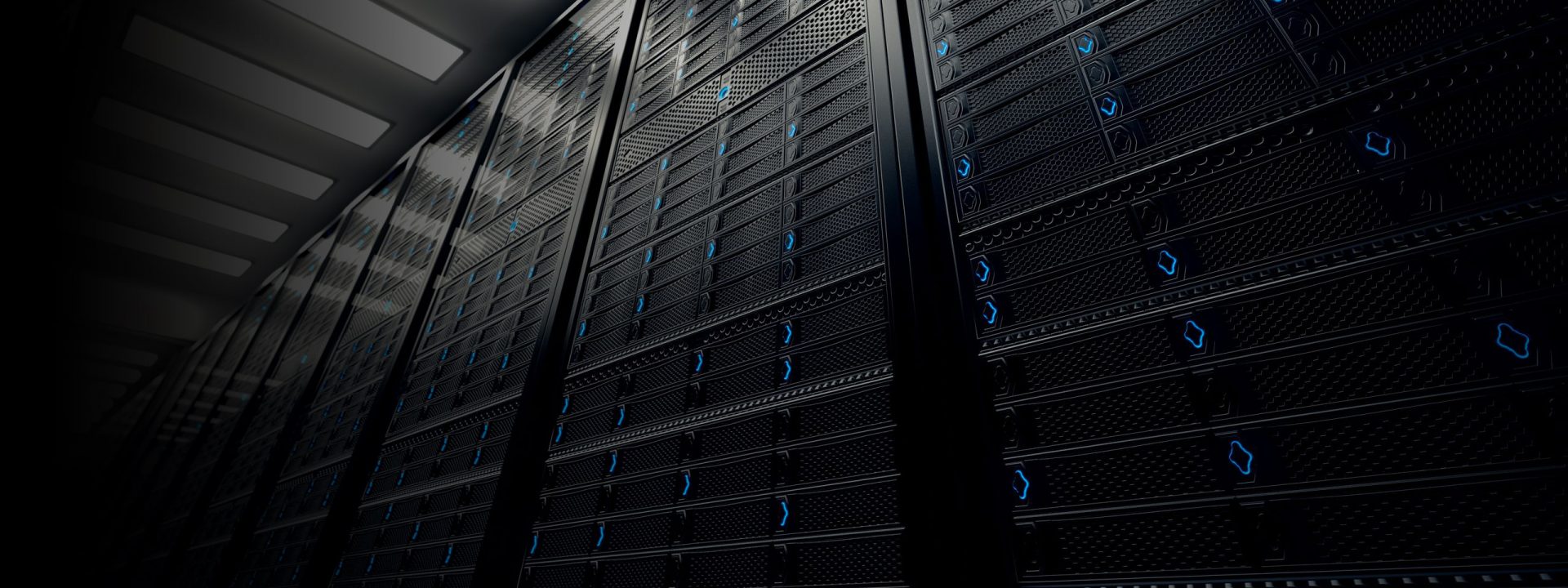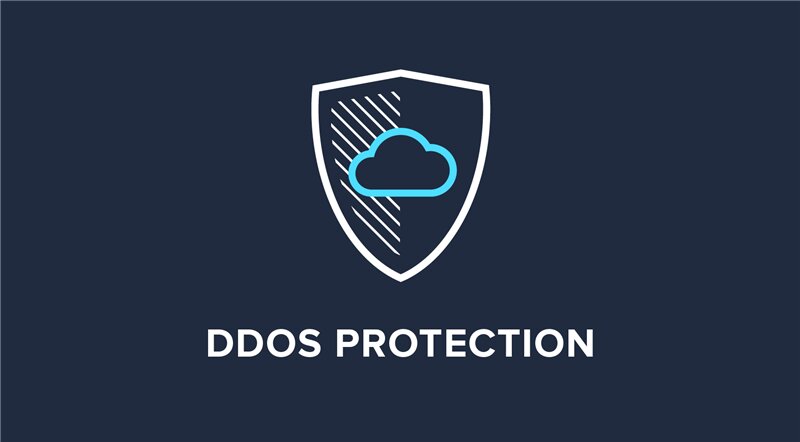- Call: 021 32789720
- Fax: 021 32785519

What is Online Security and why is it Important?
August 4, 2021
What Is Linux Hosting With C-Panel and is it better for Server Hosting?
August 17, 2021What is DDoS? It is an acronym for “Distributed Denial of Service.” This is usually considered a reflection of human failure in a system, when a significant number of people, instead of doing what is required, resort to trying to do too much. It is an attempt to overload the target through repetitive testing of systems and applications. DDoS Protection helps to prevent it.
There are many companies and people offering DDoS Protection Services. What is DDoS Protection? It is important to be cautious when choosing one, as there are some unscrupulous people on the Internet trying to make a buck at your expense. The phrase “buyer beware” applies here because you have to question whether the company providing the DDoS protection is legit or not.
DDoS Attack:
A DDoS can last from a few seconds to several hours, depending on the size of the attacking force and the skill of the attacker. Most Internet service providers (ISP) will have their own security protocols that can be configured per ISP based on the level of security that the user wants. Some ISPs offer DDoS protection services. Usually, these services are offered at an extra cost, although some may require an additional upgrade on your part. Some of the providers who offer DDoS protection services are Server4Sale, BlockDoS, Fairmount, and many more.
When an attacker successfully penetrates the firewall of your system, he may also get into your registry and begin changing settings. He may delete files, corrupt settings or just change which commands operate what programs. Once he has control over your system, he can escalate his attack to other machines, and then to servers and computers across the world. It is important to not only stop the attack itself but also escalate the attack to higher levels. There are mitigation services that can help with this as well.
Types of DDoS Attacks:
There are three kinds of DDoS attacks. The first is the generic attack, which is the most common. This kind occurs when attackers create spoofed website addresses and use them to send fake emails to large numbers of people. Real attacks happen while the user is online and performing an action on the internet.
The second is the Managed attack, which is when an administrator in the IT support center can detect the problem and then escalate it to an admin. There are also platform attacks, which is when the platform itself detects an attack and uses mitigation software. Other attacks can come from users on the network when they discover the problem and attempt to solve it themselves. It’s important for companies to have DDoS defense if they want to keep their systems online.
DDoS Protection:
When it comes to prevention, it’s all about trying to avoid the attacks in the first place. This is usually done by changing the IP of a server that’s used for gaming, or changing the passwords of websites that are running potentially harmful scripts. Firewalls can prevent attacks as well as deter others from getting onto the system. In addition to that, a good DDoS defense strategy will also include notifying the company of any hacking attempts. They may also need to change their system configurations if they find that they have been hacked.
Most companies need DDoS Protection Service, as it can prevent serious problems from occurring. However, it’s important for a business to think about their risks if they aren’t already prepared for them. Security isn’t something that should be taken lightly and should be kept updated and repaired regularly. When someone makes an attack, it’s usually because they weren’t properly prepared in the first place.
Does DDoS Protection work?
This question is one that I see asked time and again in many internet forums. There are many people who believe that no, it does not work because cyber attackers have simply figured out a weakness in the networks that we use to communicate with each other over the Internet. They have found a way to flood our servers with huge amounts of data which can overload them and force them to go down. So, no, DDoS Protection does not work.
However, I would like to say that yes, DDoS protection works. What happens during an attack is simple – attackers get onto our network and then they send large amounts of data, which is received by us via routers or IP phones. We then forward the request for the information to the IP address that was previously used to launch the attack. If you have ever seen the movie “Tucker maximum”, you will know what I am talking about. In this case, the attack happened due to the Internet service provider intercepting the data packets before they were transmitted on the real Internet.
Now, if we take the attack example given above, what happens is pretty much what you would expect. First of all, the attacker sends huge amounts of data, which is normally too much for most web servers to handle. Most web servers will eventually give up and quit. Only then will the attacker stop. However, if DDoS protection options are enabled, the attacker will only be stopped after he has used up all of the resources he has. In other words, he won’t be able to send any more traffic after he has used up his allotted web bandwidth.

DDoS Protection Models:
There are also different DDoS Protection models, such as the piggyback attack. This is an attacker who creates a proxy server, simulates a legitimate website, and gets users to visit the proxy site. At the same time, he will use the back door of that website – a download tool or some other malicious software. From there, he will install a program that will run all the malicious software and then redirect traffic from the real website to the proxy site, where he can do his things with a lot of confidence.
On the other hand, there is also another kind of DDoS protection called the DoS Protection mitigation. This kind of DDoS attack happens when attackers exploit system inconsistencies such as IP space allocation. For instance, an attacker could create several fake websites in order to make them appear legitimate. If an IP space has an allocation limit, he can easily occupy the entire IP block and start sending packets of data to his fake site.
DDoS Protection Software:
The DDoS protection software that can handle these kinds of attacks is the ones that have advanced IP address control features. They allow you to control your traffic with an online control panel and block any attacks with an easy-to-use interface. You don’t need to be a computer geek to install and manage this kind of software, because most of them are available in the form of scripts. In fact, this is the most common online DDoS solution used by millions of companies all over the world, because they are very easy to use.
Another option that you may want to consider is the on-premise protection model. With this kind of service, you can get services from different companies such as Server4Sale, BlockDoS, Acrobat, and others. They have their own custom systems and they offer different types of IP packets based on the attack logic. If you are using an IP pack with some of these providers, you should have a large capacity to handle the attack, because they are able to handle the traffic despite the overload of the IP packets. However, the process of getting an IP pack with these providers is usually much more expensive compared to the other methods, so if you want to reduce your cost for IP monitoring and controlling, then the on-premise model is the best one for you.
Need of DDoS Protection:
What is it that makes a DDoS attack so serious? One of the most important things to realize about the attacker is that they have few requirements to carry out the attack. Simple attacks only require the attacker to be located in the same area as the target web server and a personal computer.
A DDoS requires an attacker to have a lot of money to purchase and send enough traffic to overload the targeted system. Once an attacker has done this the results are often staggering. Large numbers of websites come under attack and are brought to a grinding halt with nothing to do. The attackers often break the servers and use them to launch more attacks.
DDoS attacks can happen at any time of the day or night. A sudden increase in traffic over a period of hours can lead to an onslaught of requests coming from hundreds of people. Sometimes the requests get so numerous that the webserver buckles under the strain. The response time may vary depending on the size of the traffic but eventually, it will end for no reason at all. If the traffic cannot be controlled, it is going to end for sure.
An attacker is looking for an easy target. They seek out businesses where they know that the server is not protected. Attackers know that the personal computers connected to the server are unsecured. They may also know that the server is unprotected because many companies use the same technology to provide customer service and Web site hosting. Their goal is to overload the resource by sending more traffic than can be accommodated. Then, the server buckles under the load and starts to give out erroneous information or even crashes completely.
Precautions for DDoS Attack:
There are some precautions that companies can take to minimize the attacks. For instance, they can purchase a dedicated firewall. A Dedicated Firewall can block attackers completely and prevent them from getting through. There are many companies that offer this kind of service. In fact, your Internet service provider can set up one for your Internet if it doesn’t already have one.
Companies also need to take other steps like monitoring. When an attack happens, the Internet protocol is changed and attackers have a pinpointed target. They may choose a company or a person to send the attacks against. It is crucial to quickly determine what is happening. If the attacks persist, the damage could be extensive.
To prevent these attacks, companies must do everything possible to make sure personal information does not become public. It is a good idea to only release the information if the customer specifically requested it. However, there are also businesses that make personal information public and then sell it to marketers who will bombard the Web with junk mail. Data centers are often targets. They become the new front door for attackers to infiltrate computers.
DDoS Protection Defence:
As the Internet grows, so does its need for DDoS protection. The Internet is not only a vast source of endless knowledge but also a valuable tool for research. Without the Internet, many advances would not be possible. Now that we know why we need DDoS protection, we can put methods in place to ensure that it never happens again. The DDoS attacker will think twice before hitting.
The best defense is prevention. Today, most online activities are done through scripts that automatically infect computers that connect to the Internet. Some of these scripts are useful, but many are malicious. Once an infected server is hit by a bot, personal information such as IP addresses and even credit card numbers can be obtained.
Today, it is easy to stop attackers from attacking our systems. There are several things that can be configured on a server or client to restrict or deny access. For example, some Web hosts may use a “moderation control panel” to set limits on access based on the time and frequency of delivery of service. Other measures include enforcing limitations on the number of simultaneous downloads and uploading of data, preventing connections to particular servers, and preventing broadcasting of sensitive personal information over the Internet.

Conclusion:
While the question “How does DDoS protection work?” is very common among cyber-criminals and hacker experts, the answer to this question is not so easy to provide. In fact, there are currently different types of DDoS protection technology that were developed according to the different types of attacks. Some of the popular methods include content filtering, which uses rules that will help the network administrators to limit access to certain types of Internet resources, the system of relays, and also the generation of routing tables.
In addition to the prevention of attacks, we can also take precautions to minimize damage caused by them. Today, many security companies provide DDoS protection for their clients. These professionals will monitor an attack and respond quickly. They will assess the extent of the threat and take the appropriate actions to protect us. While the cost may seem high, this is often better than having our data compromised.


